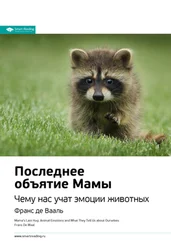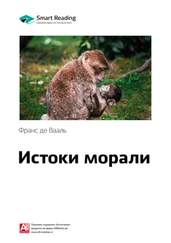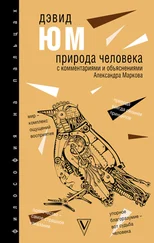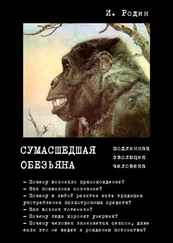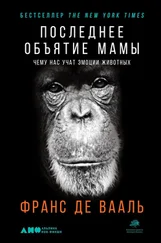Wilson, M. L., and Wrangham, R. W. (2003) “Intergroup Relations in Chimpanzees.” Annual Review of Anthropology 32: 363–392.
Wittig, R. M., and Boesch, C. (2003) “Decision-making’ in Conflicts of Wild Chimpanzees (Pan Troglodytes): An Extension of the Relational Model.” Behavioral Ecology & Sociobiology 54: 491–504.
Wrangham, R. W. (1999) “Evolution of Coalitionary Killing.” Yearbook of Physical Anthropology 42: 1–30.
Wrangham, R. W., and Peterson, D. (1996) Demonic Males: Apes and the Evolution of Human Aggression . Boston: Houghton Mifflin.
ГЛАВА ПЯТАЯ. ДОБРОТА
Anderson, J. R., Myowa-Yamakoshi, M., and Matsuzawa, T. (2004) “Contagious Yawning in Chimpanzees.” Proceedings of the Royal Society of London, B (Suppl.) 271: 468–470.
Bischof-Köhler, D. (1988) “Über den Zusammenhang von Empathie und der Fähigkeit sich im Spiegel zu erkennen.” Schweizerische Zeitschrift für Psychologie 47: 147–159.
Boesch, C. (2003) “Complex Cooperation Among Taï Chimpanzees.” In Animal Social Complexity , de Waal, F. B. M., and Tyack, P. L. (Eds.), pp. 93–110. Cambridge, MA: Harvard University Press.
Bonnie, K. E., and de Waal, F. B. M. (2004) “Primate Social Reciprocity and the Origin of Gratitude.” In The Psychology of Gratitude , Emmons, R. A., and McCullough, M. E. (Eds.), pp. 213–229. Oxford: Oxford University Press.
Brosnan, S. F., and de Waal, F. B. M. (2003) “Monkeys Reject Unequal Pay.” Nature 425: 297–299.
Caldwell, M. C., and Caldwell, D. K. (1966) “Epimeletic (Care-Giving) Behavior in Cetacea.” In Whales, Dolphins, and Porpoises , Norris, K. S. (Ed.), pp. 755–789. Berkeley, CA: University of California Press.
Church, R. M. (1959) “Emotional Reactions of Rats to the Pain of Others.” Journal of Comparative & Physiological Psychology 52: 132–134.
de Waal, F. B. M. (1989) “Food Sharing and Reciprocal Obligations Among Chimpanzees.” Journal of Human Evolution 18: 433–459.
_____. (1996) Good Natured: The Origins of Right and Wrong in Humans and Other Animals . Cambridge, MA: Harvard University Press.
_____. (1997) “The Chimpanzee’s Service Economy: Food for Grooming.” Evolution & Human Behavior 18: 375–386.
_____. (2000) “Attitudinal Reciprocity in Food Sharing Among Brown Capuchins.” Animal Behaviour 60: 253–261.
de Waal, F. B. M., and Aureli, F. (1996) “Consolation, Reconciliation, and a Possible Cognitive Difference Between Macaque and Chimpanzee.” In Reaching into Thought: The Minds of the Great Apes , Russon, A. E., Bard, K. A., and Parker, S. T. (Eds.) pp. 80–110. Cambridge: Cambridge University Press.
de Waal, F. B. M., and Berger, M. L. (2000) “Payment for Labour in Monkeys.” Nature 404 : 563.
de Waal, F. B. M., and Luttrell, L. M. (1988) “Mechanisms of Social Reciprocity in Three Primate Species: Symmetrical Relationship Characteristics or Cognition?” Ethology & Sociobiology 9: 101–118.
Dewsbury, D. A. (2003) “Conflicting Approaches: Operant Psychology Arrives at a Primate Laboratory.” The Behavior Analyst 26: 253–265.
di Pellegrino, G., Fadiga, L., Fogassi, L., Gallese, V., and Rizzolatti, G. (1992) “Understanding Motor Events: A Neurophysiological Study.” Experimental Brain Research 91: 176–180.
Dimberg, U., Thunberg, M., and Elmehed, K. (2000) “Unconscious Facial Reactions to Emotional Facial Expressions.” Psychological Science 11: 86–89.
Fehr, E., and Schmidt, K. M. (1999) “A Theory of Fairness, Competition, and Cooperation.” Quarterly Journal of Economics 114: 817–868.
Frank, R. H. (1988) Passions Within Reason: The Strategic Role of the Emotions . New York: Norton.
Gallup, G. G. (1982) “Self-Awareness and the Emergence of Mind in Primates.” American Journal of Primatology 2: 237–248.
Gould, S. J. (1980) “So Cleverly Kind an Animal.” In Ever Since Darwin , pp. 260–267. Harmondsworth, UK: Penguin.
Grammer, K. (1990) “Strangers Meet: Laughter and Nonverbal Signs of Interest in Opposite-Sex Encounters.” Journal of Nonverbal Behavior 14: 209–236.
Greene, J., and Haidt, J. (2002) “How (and Where) Does Moral Judgment Work?” Trends in Cognitive Sciences 16: 517–523.
Haidt, J. (2001) “The Emotional Dog and Its Rational Tail: A Social Intuitionist Approach to Moral Judgment.” Psychological Review 108: 814–834.
Hare, B., Call, J., and Tomasello, M. (2001) “Do Chimpanzees Know What Con- specifics Know?” Animal Behaviour 61: 139–151.
Hatfield, E., Cacioppo, J. T., and Rapson, R. L. (1993) “Emotional Contagion.” Current Directions in Psychological Science 2: 96–99.
Hume, D. (1985 [1739]) A Treatise of Human Nature. Harmondsworth, UK: Penguin.
Jacoby, S. (1983) Wild Justice: The Evolution of Revenge . New York: Harper and Row.
Kuroshima, H., Fujita, K., Adachi, I., Iwata, K., and Fuyuki, A. (2003) “A Capuchin Monkey (Cebus Apella) Recognizes When People Do and Do Not Know the Location of Food.” Animal Cognition 6: 283–291.
Ladygina-Kohts, N. N. (1935 [2001]) Infant Chimpanzee and Human Child: A Classic 1935 Comparative Study of Ape Emotions and Intelligence . de Waal, F. B. M. (Ed.), New York: Oxford University Press.
Lethmate, J., and Dücker, G. (1973) “Untersuchungen zum Selbsterkennen im Spiegel bei Orangutans und einigen anderen Affenarten.” Zeitschrift für Tierpsychologie 33: 248–269.
Leuba, J. H. (1928) “Morality Among the Animals.” Harper’s Monthly 937: 97–103.
Macintyre, A. (1999) Dependent Rational Animals: Why Human Beings Need the Virtues . Chicago: Open Court.
Masserman, J., Wechkin, M. S., and Terris, W. (1964) “Altruistic Behavior in Rhesus Monkeys.” American Journal of Psychiatry 121: 584–585.
Mencius (372–289 b.c.) The Works of Mencius . English translation by Gu Lu. Shanghai: Shangwu.
Mendres, K. A., and de Waal, F. B. M. (2000) “Capuchins Do Cooperate: The Advantage of an Intuitive Task.” Animal Behaviour 60: 523–529.
Nakayama, K. (2004) “Observing Conspecifics Scratching Induces a Contagion of Scratching in Japanese Monkeys (Macaca Fuscata).” Journal of Comparative Psychology 118: 20–24.
Oakley, K. (1957) Man the Tool-Maker . Chicago: University of Chicago Press.
O’Connell, S. M. (1995) “Empathy in Chimpanzees: Evidence for Theory of Mind?” Primates 36: 397–410.
Payne, K. (1998) Silent Thunder: In the Presence of Elephants . New York: Penguin.
Povinelli, D. J., and Eddy, T. J. (1996) “What Young Chimpanzees Know About Seeing.” Monographs of the Society for Research in Child Development 61: 1–151.
Premack, D., and Woodruff, G. (1978) “Does the Chimpanzee Have a Theory of Mind?” Behavioral and Brain Sciences 4: 515–526.
Preston, S. D., and de Waal, F. B. M. (2002) “Empathy: Its Ultimate and Proximate Bases.” Behavioral and Brain Sciences 25: 1–72.
Reiss, D., and Marino, L. (2001) “Mirror Self-Recognition in the Bottlenose Dolphin: A Case of Cognitive Convergence.” Proceedings of the National Academy of Sciences 98: 5937–5942.
Rose, L. (1997) “Vertebrate Predation and Food-Sharing in Cebus and Pan.” International Journal of Primatology 18: 727–765.
Schuster, G. (September 5, 1996) “Kolosse mit sanfter Seele.” Stern 37: 27.
Читать дальше
Конец ознакомительного отрывка
Купить книгу
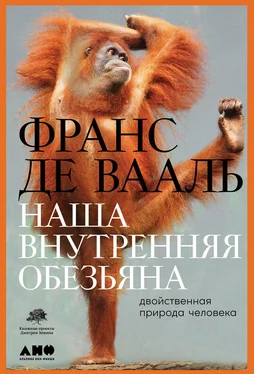





![Франс Вааль - Последнее объятие Мамы [litres]](/books/406055/frans-vaal-poslednee-obyatie-mamy-litres-thumb.webp)
